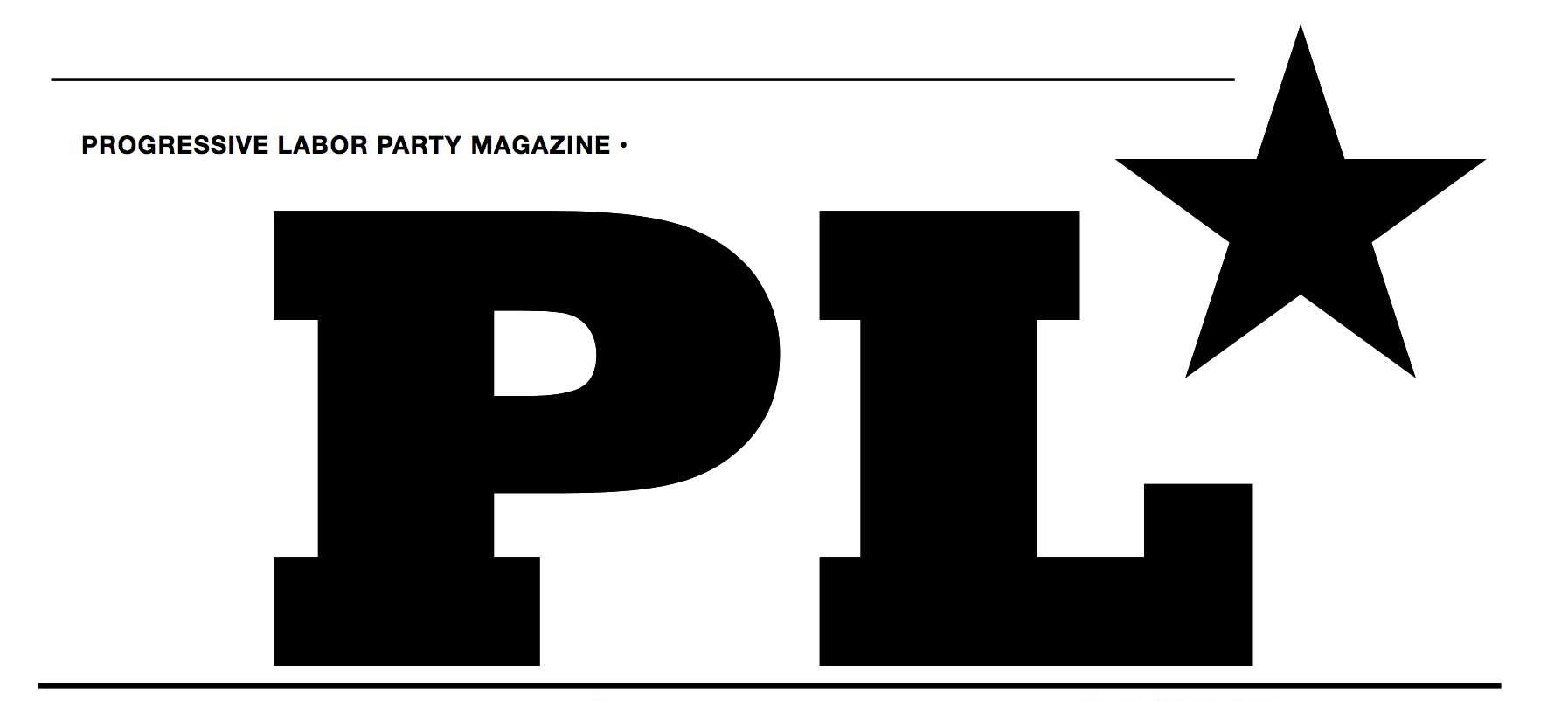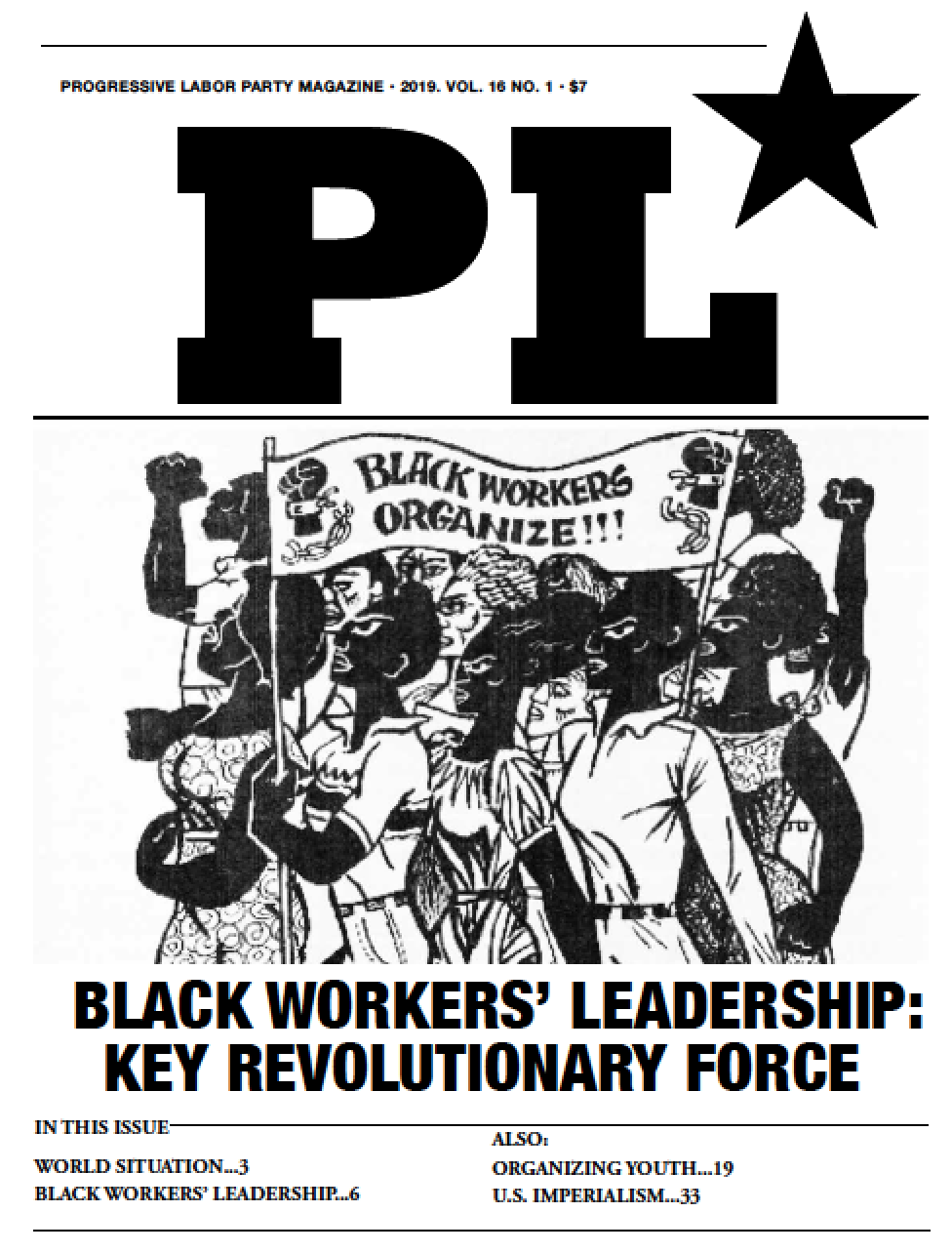Rising China, Primer for War
 Friday, September 16, 2016 at 11:08AM
Friday, September 16, 2016 at 11:08AM The conflict of 1914 was the “seminal catastrophe” of the twentieth century. There is no reason to suppose the [China]-American conflict of a decade hence would not be the seminal catastrophe of the twenty-first.
— The National Interest, 9/7/16.
China’s recent imperialist expansion clashes head-on with the need of U.S. capitalism to maintain its top-dog status, signaling another step toward world war. Despite July’s ruling against them by the international Permanent Court of Arbitration, the Chinese imperialists continue to sail their ships through the Scarborough Shoal (Washington Post, 9/7). According to the Philippines military, these ships were capable of dredging sand—in other words, building more islands. The Shoal is part of a “strategic triangle” near the Philippines “that would allow Beijing to control the South China Sea” (qz.com, 9/11).
The international working class is caught squarely in the middle of this dogfight. Workers are the ones who fight and die in imperialist wars; the bosses will spare no worker in their quest for domination of profit, labor, and resources. Regardless of which capitalist power winds up on top, workers will suffer mass casualties, racist and sexist exploitation, and extreme state terror. The Progressive Labor Party fights for communism, a system that will smash racism, sexism, and imperialist war for all time.
Primer for War
The shift of global power now underway—the relative decline of the U.S. empire, and the surge of China—is a primer for war. Prior to World War I, the Ottoman and Russian empires were falling, and the U.S. was early in its rise. By the end of World War II, U.S. imperialism had established worldwide dominance. But that was then. Today the U.S. faces challenges on many fronts: Russia, ISIS, the Middle East, Africa, Latin America and China. This editorial will focus on the clash with China and analyze The National Interest article published two days after the G20 summit conference in Hangzhou, China: “Why America and China Today Are Like Pre-World War I Europe.”
The bosses are now openly admitting what PLP has asserted for years. Disputes over the South China Sea, more assertive regional powers like Japan and the Philippines, the creation of the U.S.-dominated Trans-Pacific Partnership, and China’s One Belt, One Road initiative are moving the world toward a broad global conflict. While these developments are fluid and could go in many directions, ruling-class academic Jared McKinney lays out a blow-by-blow scenario for the next world war:
The creation of new flashpoints in the East and South China Seas is the first stage. This has already happened.
The South China Sea is essential to China’s bid to establish itself as the new top-dog imperialist. China’s economy depends on foreign trade, 90 percent of which travels by sea, which puts the rising superpower in a vulnerable position. In 2013, 82 percent of China’s crude oil imports passed through the Strait of Malacca, a maritime choke point controlled by the United States (Stratfor, 6/24/2015). When China builds islands with military capabilities and flouts international maritime law, it is pushing back aggressively against U.S. imperialism. As all imperialists understand, those who control the movement of oil control the world.
The increased number of Chinese boats in the Scarborough Shoal, a “precursor to possible building of structures on the shoal,” is just the latest example of capitalist China’s ambitions (Reuters, 9/8). In response, the U.S. and its ally, Japan, are increasing their military resources in the South China Sea by arming patrol ships and surveillance aircraft, and by training military forces in Malaysia and the Philippines (Stratfor, 9/7).
It’s only a matter of time until the U.S. sends more troops to these regions. “By positioning sufficient troops forward, including ground forces in Japan and the Philippines, the U.S. could…offset China’s military buildup” (Foreign Affairs, September/October).
Strengthened anti-China groups (both military and economic) are the second stage; this is currently under way.
In addition to challenging the seas, China is making what may be the biggest economic development plan in history, “One Belt, One Road” (OBOR). Funded by the Asian Infrastructure Investment Bank (AIIB), China’s rival to the U.S.-backed World Bank, this is a plan to develop markets and infrastructure in over 60 countries across Asia, Africa, and Europe. OBOR is luring a number of national bosses traditionally allied with the U.S., from Saudi Arabia (the largest source of U.S. oil profits) to Djibouti (home to a U.S. military base) to Turkey, the no longer reliable corridor from Europe to the Middle East.
The strategy behind the Belt and Road Initiative is to diversify transit lines, thereby mitigating China’s vulnerability to external economic disruption and reinvigorating China’s slowing economy (Stratfor, 6/24/15).
U.S. bosses have responded by locking down their allies and creating their own economic alliance, the Trans-Pacific Partnership (TPP), though it has yet to be passed by Congress. The TPP is a trade agreement among twelve countries in North America, South America, Asia, and Oceania, similar to the Clinton administration’s North American Free Trade Agreement (NAFTA).
An intensified arms race with China and simultaneous constructed crises, typically over “alliance credibility,” are the third stage.
As China advances to realize its global ambitions, it must build a military to protect Chinese capitalists’ investments. China’s military is still weak, as compared to the U.S., but it is strengthening quickly. China just launched the world’s first quantum satellite, which can easily detect stealth planes and is highly resistant to jamming. They are also close to finishing the first Chinese-made aircraft carrier, a big step in extending their military reach.
Peaceful resolution of a few crises is the fourth stage. It’s here that…the statesmen insist on ‘firmly’ defending ‘present-day interests,’ having no fear of the specter of war.
U.S. Vice President Joseph Biden writes, “The next administration will have to steer a relationship with China that encompasses both breakthrough cooperation and, potentially, intensified competition” (Foreign Affairs, September/October). It’s no coincidence that China, Australia and the U.S. recently staged their third annual joint military survival training exercise “to build cooperation and trust”—just one week before Russia and China were to conduct an eight-day naval drill in the South China Sea (People’s Daily, 9/11). Temporary cooperation, a sign of weakness for a constrained U.S., will inevitably give way to wider conflict.
U.S. Says: Mobilize for War, Draft
In light of the upcoming election of the next chief servant of arch-U.S. imperialists, Foreign Affairs (the magazine of the Council on Foreign Relations, the leading think tank for the main finance wing of U.S. capitalism) dedicates its entire September/October issue to future war strategy. What the U.S. self-admittedly needs but lacks are class unity and ground forces. As conflict with China intensifies, the U.S. ruling class is insecure about many things, among them a disjointed Congress and a “broken military system.”
Co-writing with one of the bosses’ favorite strategists, Michael O’Hanlon, disgraced former general and war criminal David Petraeus (Afghanistan, Iraq) calls the U.S. armed forces “the best military in the world today, by far,” but cautions that it must be ready to handle multiple battles simultaneously. These ruling-class insiders criticize Barack Obama’s plan to cut back the active-duty Army:
Washington might declare its lack of interest in large-scale land operations and stabilization [occupation] missions, but history suggests that eventually it would find itself engaging in them nevertheless…The current and future army must be ready to handle a wide range of possible challenges.
They go on to call the current military budget of $600 billion a “bargain,” and advise against further cuts. If the U.S. is to check China’s imperialist ambitions, the bosses will need more than a TPP. They will need a willing army.
Making a Draft Palatable
As reflected in Foreign Affairs, the U.S. ruling class is now openly calling for a draft:
“The only way to create a military reserve that looks like the United States [demographically] is to empower the state to require involuntary service. The trick is to make the empowerment politically palatable.” The bosses know they need a military that is “equitable and inclusive: no exemptions for the well-to-do.”
While racism and divisions within the working class prop up the capitalists’ profit system, these divisions also limit their maneuverability. The bosses lament their lack of an essential aspect of fascism: all-class unity. Presenting a “people’s army,” as the CFR calls it, is contingent upon building a patriotic “America First” mindset. This has been a big struggle for the rulers, as the massive unpopularity of both Democratic and Republican politicians attests.
Who will pay for these coming oil wars? The working class. The main causes of U.S. financial woes “are the government’s rapidly increasing debt and the expanding cost of entitlement programs…It is on the domestic front where the tough choices will have to be made in order to defend the nation’s security and economic well-being.”
Only through fascist control on the domestic front can the imperialists gain an edge on the war front. To mobilize for war, the bosses need intensified nationalism and patriotism to pacify the working class into accepting lower wages and benefits and massive state terror. Tax dollars will be funneled into the buckling U.S. infrastructure. Last year, the American Society of Civil Engineers gave U.S. infrastructure a grade of D+. It estimates an investment of $3.6 trillion will be needed by 2020 if the U.S. economy expects “to be the most competitive in the world” (Wired, 1/23/15).
Turn Imperialist War Into Class War
To paraphrase Marx, every problem contains the elements of its own solution. World War I gave rise to the Bolshevik Revolution and the Soviet Union, the first workers’ state. World War II gave rise to the Chinese Revolution. The march towards World War III will give rise to the conditions for a worldwide communist revolution. Everywhere in the world—including China and the U.S.—the international working class is fighting back.
Fighting back counts. September 9 marked the 45-year anniversary of the Attica prison rebellion in upstate New York, when 1,300 prisoners revolted against brutal, racist conditions. For four days, before liberal Governor Nelson Rockefeller launched his massacre, they were in charge. This example of Black working-class-led rebellion lives on as a terrible reminder for the bosses—and as an inspiration for our class.





 Progressive Labor Party (PLP) fights to destroy capitalism and the dictatorship of the capitalist class. We organize workers, soldiers and youth into a revolutionary movement for communism.
Progressive Labor Party (PLP) fights to destroy capitalism and the dictatorship of the capitalist class. We organize workers, soldiers and youth into a revolutionary movement for communism.




Reader Comments